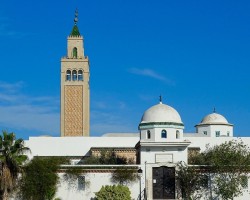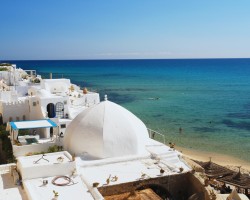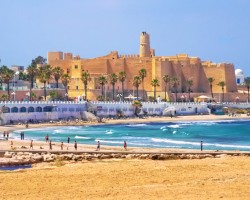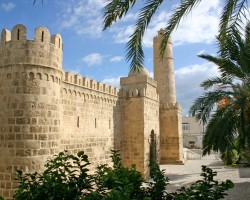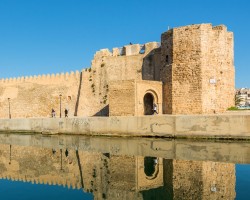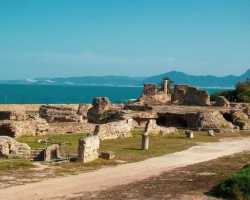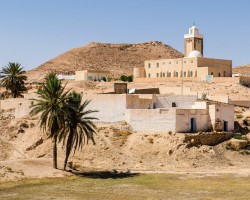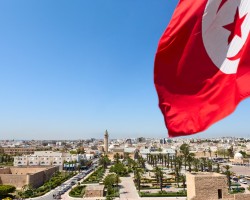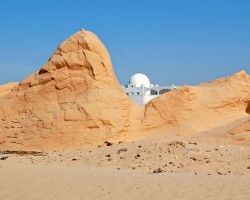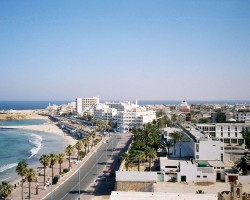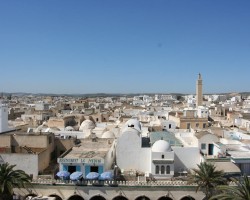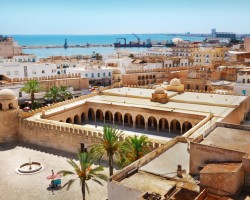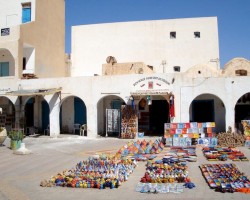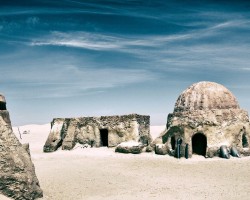Best time to go to Tunisia for a perfect weather and where to go?
When is the best time to go to Tunisia?
Although the country can be visited all year round, the best time to go to Tunisia is spring, from late March to late June, but also autumn, between September and November.
Indeed, these shoulder seasons will allow you to enjoy your trip in privacy, away from the crowds of holidaymakers who flock there in July and August. Moreover, you can travel to Tunisia on a small budget, as accommodation rates, dining costs, and airfare prices are relatively affordable. The mild climate during these periods allows for sensational hikes and late-season swimming.
Even though the months of July and August see an increase in attendance at beach resorts, a trip is not to be ruled out. It is actually the best season if you want to fully enjoy the beach, and it is always possible to find a quiet village to settle in. Furthermore, summer is the season of festivals in the northeast of the country, such as in Monastir, Carthage, or Hammamet. When to go to Tunisia during school holidays? If you have the choice, prefer the month of July, which is slightly less crowded than August.
During winter, from November to March, the mild climate is an additional reason to explore Tunisia. You can then plan a program that combines relaxation and cultural discoveries, all under a constant sun. In terms of attendance, December and March are quite busy, as the country attracts many Europeans in search of blue skies and mild weather. It is therefore ideal to opt for November, January, or February.
Where and when to go based on the weather?
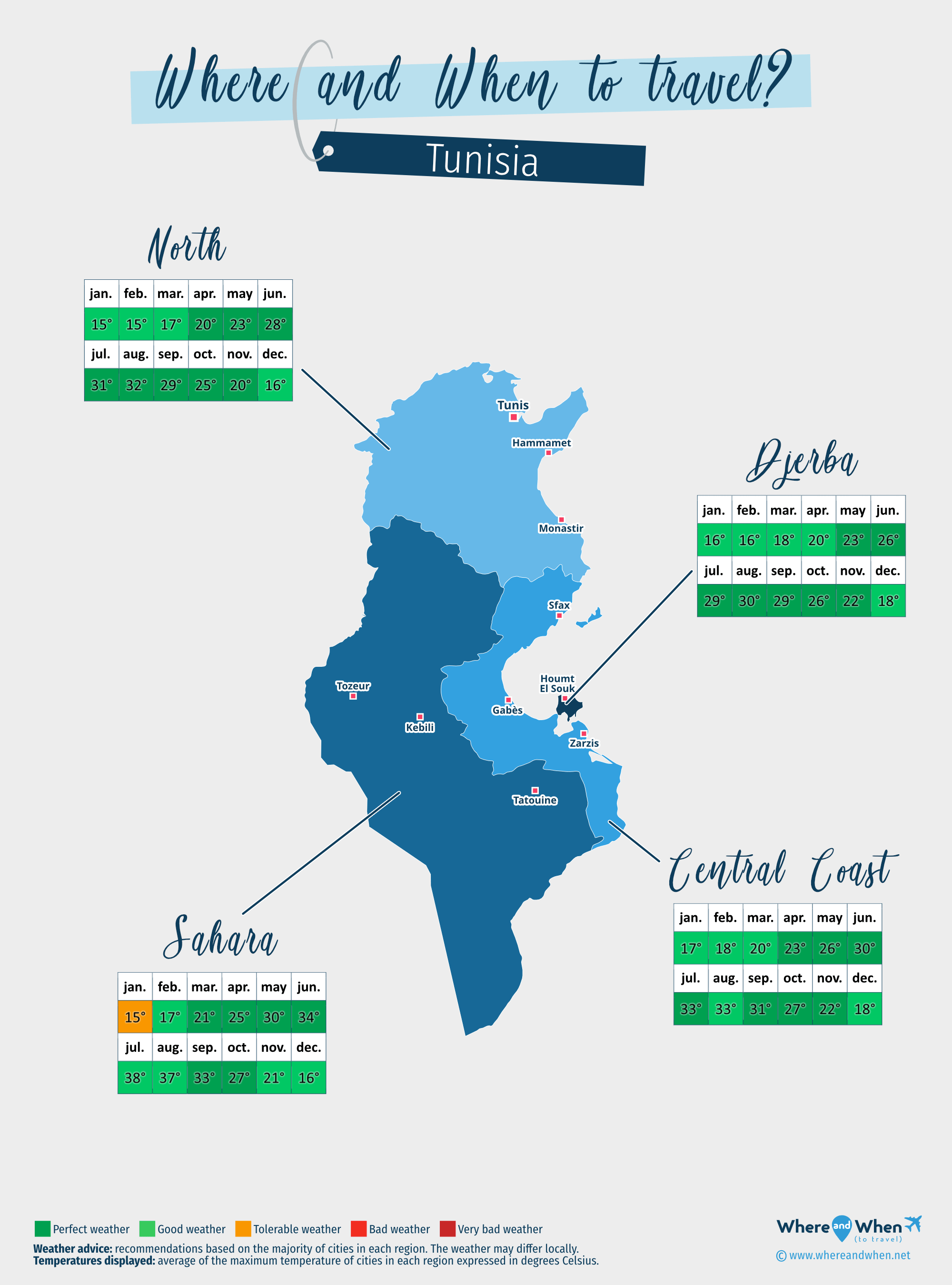
Central Coast of Tunisia
Sfax, Zarzis, Gabès...
Djerba
Houmt El Souk, Midoun, Guellala...
North of Tunisia
Tunis, Hammamet, Monastir...
Sahara
Tozeur, Kebili, Tatouine...
To get all the information about the climate and weather in Tunisia for a specific month, click on the corresponding link below:
Tunisia in january Tunisia in february Tunisia in march Tunisia in april Tunisia in may Tunisia in june Tunisia in july Tunisia in august Tunisia in september Tunisia in october Tunisia in november Tunisia in december
Best time to travel to Tunisia by cities
Climate and Weather in Tunisia
Located in North Africa, between Algeria and Libya, the country is very stretched from north to south. As a result, the climate in Tunisia is of three types:
- Mediterranean with hot summers in the north, in the region of Tunis, Bizerte, Hammamet, and Nabeul.
- Semi-arid steppe, dry and hot in areas like Monastir, Sousse, Zarzis, or Sfax.
- Arid desert, hot and dry in Tozeur, in the Sahara.
In general, temperatures are higher in the south than in the north, but the weather in Tunisia is pleasant throughout the country. It varies according to regions, relief, and seasons:
- In spring, the sun shines everywhere, with some rain along the Mediterranean Basin.
- In summer, the atmosphere is hot and dry, and some areas in the south of the country can experience extreme temperatures, often exceeding 40°C (104°F) in the Sahara.
- Autumn is very pleasant in Tunisia. In October, summer lingers, but in November the weather deteriorates with numerous showers.
- Winter is cool and more humid, especially in January and February. It can even snow in the mountains.

Climate in Djerba and on the central coast of Tunisia
It is no coincidence that the coastal regions are very touristic: they benefit from pleasant weather and are suitable for visiting all year round. Regardless of the season, one can enjoy mild and not overwhelming temperatures, even in the middle of summer, in July and August. Autumn is also an interesting season as it is possible to swim on the Tunisian coast until October, before the cooler season arrives in November.
In Djerba and around Sfax, the semi-arid steppe climate, dry and hot, offers beautiful sunny days. In summer, temperatures range between 28 and 30°C (86°F) , with water around 27°C (81°F) . In winter, in January and February, it generally stays above 15°C (59°F) , while the transitional seasons are perfect for a stay, especially in June and from September to November, with temperatures around 25°C (77°F) .
Towards Gabès, the climate is more desertic and temperatures are higher, yet remaining reasonable as even in the peak of summer it rarely exceeds 35°C (95°F) . This is an advantage during other seasons, as daytime temperatures hover around 17°C (63°F) in January, 21°C (70°F) in March, and 23°C (74°F) in November.
Climate in northern Tunisia
Overall, the climate of this region of Tunisia is Mediterranean with hot summers. It can be said that the seasons are more pronounced there than elsewhere in the country, except when heading south, towards Monastir, which benefits from a dry and hot steppe climate.
In summer, from June to September, sea breezes from the Mediterranean offer a beneficial mildness that allows enjoying the beauty of the landscapes, especially around Tunis. It generally reaches around 33°C (92°F) , but evenings and nights are milder, with temperatures close to 27°C (81°F) . At this time, precipitation is almost non-existent, making it a good time to enjoy the sea, with water temperatures around 25°C (77°F) .
Spring and autumn are relatively rainy, especially in February, March, and October. Nevertheless, beautiful days are frequent and the weather is always pleasant. For example, in November, temperatures generally exceed 20°C (68°F) and it is still possible to swim.
Winter is harsher, but still nothing like European weather. In the capital, Tunis, it mostly stays above 15°C (59°F) at the hottest part of the day.
Climate in the Sahara
While the interior of Tunisia has some beautiful tourist sites to discover, it is a region that is not very popular with tourists due to its harsh climate. Indeed, as soon as summer arrives, the heat quickly becomes unbearable, with temperatures sometimes rising up to 50°C (122°F) ... in the shade! Furthermore, this part of Tunisia, like its Algerian neighbor, suffers from severe drought, and rain cannot be relied upon to cool the atmosphere.
Milder than the area near Tozeur, southern Tunisia benefits from the presence of oases, such as near Kebili, which make temperatures more pleasant. However, while the weather is particularly mild in spring, it should be noted that nights are quite cold in this part of the country, close to the desert. Sandstorms sweeping through this area are also not uncommon, making walks or other outings difficult.
In winter, especially in January, it is cold and the climate is not favorable for exploring this part of Tunisia. While daytime temperatures can reach around 15°C (59°F) , at night the thermometer drops to an average of 7°C (45°F) . It is therefore ideal to plan a stay during the transitional seasons: from March to May and from September to November.
Temperatures and rainfall in Tunisia
On these 3 graphs, we present the evolution of temperatures of Tunisia and month-by-month rainfall for the cities of Tunis, Houmt El Souk, Hammamet, Monastir and Sfax, as well as the month-by-month sea temperature for coastal cities.
Peak visitor numbers and tourist seasons in Tunisia
Find out when Tunisia has its high tourist season (the period when the influx of tourists is highest) and off-peak tourist season using our data and figures.
Tourist seasons in Tunisia
The months with low numbers of tourists are: January, February, March, April, May, June, September, October, November and December. The number of visitors to Tunisia is high in: July and August.
- Very low season in Tunisia: January, February, March, June and November.
- Low season in Tunisia: April, May, September, October and December.
- High season in Tunisia: July.
- Peak season in Tunisia: August.
Figure: Visitor index for Tunisia month by month
Average price for flights to Tunisia
A return flight between Montreal and Tunis is generally cheaper if you go in february ($ 747 on average): this is the best time for travellers on a tight budget. In contrast, you may end up paying $ 612 more for your airline ticket to Tunis if you go in july.
Find the best price for your flight Flight prices to Tunisia
Where to go in Tunisia?
This table allows you to see the maximum temperature for each city and our opinion on the weather month by month (see colour legend below the table).
| Cities | jan. | feb. | mar. | apr. | may | jun. | jul. | aug. | sep. | oct. | nov. | dec. |
| Tunis | 61°F | 61°F | 65°F | 70°F | 77°F | 86°F | 92°F | 94°F | 86°F | 79°F | 70°F | 63°F |
| Houmt El Souk | 63°F | 63°F | 65°F | 68°F | 74°F | 79°F | 85°F | 86°F | 85°F | 79°F | 72°F | 65°F |
| Hammamet | 61°F | 61°F | 65°F | 70°F | 76°F | 85°F | 90°F | 92°F | 85°F | 79°F | 70°F | 63°F |
| Monastir | 63°F | 63°F | 67°F | 70°F | 76°F | 83°F | 90°F | 90°F | 86°F | 79°F | 72°F | 65°F |
| Sfax | 63°F | 63°F | 67°F | 70°F | 76°F | 83°F | 88°F | 90°F | 86°F | 79°F | 72°F | 65°F |
| Bizerte | 59°F | 59°F | 63°F | 67°F | 74°F | 81°F | 86°F | 88°F | 83°F | 77°F | 68°F | 63°F |
| Carthage | 61°F | 61°F | 65°F | 70°F | 77°F | 86°F | 92°F | 94°F | 86°F | 79°F | 70°F | 63°F |
| Gabès | 63°F | 65°F | 70°F | 76°F | 81°F | 88°F | 94°F | 94°F | 90°F | 83°F | 74°F | 65°F |
| Gammarth | 61°F | 61°F | 65°F | 70°F | 77°F | 86°F | 92°F | 94°F | 86°F | 79°F | 70°F | 63°F |
| Hammam Lif | 61°F | 61°F | 65°F | 70°F | 77°F | 86°F | 92°F | 92°F | 86°F | 79°F | 70°F | 63°F |
| Kebili | 58°F | 61°F | 68°F | 76°F | 85°F | 94°F | 101°F | 99°F | 90°F | 79°F | 68°F | 59°F |
| Mahdia | 63°F | 63°F | 67°F | 70°F | 76°F | 83°F | 88°F | 90°F | 85°F | 79°F | 72°F | 65°F |
| Nabeul | 59°F | 59°F | 63°F | 67°F | 74°F | 81°F | 86°F | 88°F | 83°F | 76°F | 68°F | 61°F |
| Soussa | 63°F | 63°F | 67°F | 70°F | 77°F | 85°F | 90°F | 92°F | 86°F | 79°F | 72°F | 65°F |
| Tatouine | 63°F | 67°F | 72°F | 79°F | 85°F | 92°F | 97°F | 97°F | 94°F | 85°F | 74°F | 65°F |
| Tozeur | 63°F | 67°F | 74°F | 83°F | 90°F | 99°F | 106°F | 104°F | 97°F | 86°F | 74°F | 65°F |
| Zarzis | 63°F | 65°F | 68°F | 72°F | 77°F | 83°F | 88°F | 90°F | 86°F | 81°F | 74°F | 67°F |
| Al Haouaria | 59°F | 59°F | 61°F | 65°F | 70°F | 77°F | 83°F | 85°F | 81°F | 76°F | 68°F | 63°F |
| Al Matlin | 59°F | 59°F | 63°F | 67°F | 74°F | 81°F | 86°F | 88°F | 83°F | 77°F | 68°F | 63°F |
| Bouficha | 61°F | 61°F | 65°F | 70°F | 76°F | 85°F | 90°F | 92°F | 85°F | 79°F | 70°F | 63°F |
Legend:
perfect weather
good weather
tolerable weather
About Tunisia
What can I do in Tunisia?
Beaches / swimming
Nature and countryside
Culture and heritage
Sports
Family travel
Crafts / shopping
Gastronomy
Nightlife
Is this weather information for Tunisia reliable?
Climate data for Tunisia has been gathered every day since January 2009. The analysis of these meteorological data for Tunisia allows us to determine the average for each month in Tunis, Houmt El Souk, Hammamet, Monastir, Sfax, Bizerte, Carthage, Gabès, and 64 other cities.
So yes: this data is reliable except in cases of temporary climate disruption in the region.

